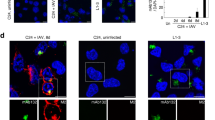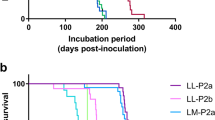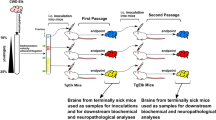Abstract
Transmissible spongiform encephalopathies (TSEs), or prion diseases, are a group of incurable neurodegenerative disorders, including Kuru and Creutzfeldt-Jakob disease in humans, “mad cow” disease in cattle, and scrapie in sheep. This paper presents structural, genetic, and evolutionary evidence supporting an endogenous TSE virus model that integrates the three major traditional views on the nature of TSE pathogens, the conventional virus view, the prion hypothesis, and the virino concept, into a novel conceptual and evolutionary framework. According to this model, the TSE pathogens are symbiotic endogenous viruses that inadvertently produce transmissible viral particles that lack the viral genome and are composed primarily of the viral prion protein (PrP). Production of defective viral particles that contain a partial genome or lack the viral genome entirely is a relatively common event in the life cycle of many viruses. Similar to the normal viral particles, which contain a genome, these defective viral particles can be transmitted to new host cells. Obviously, in the absence of viral genome, these protein-only viral particles cannot establish a productive infection. However, if these viral particles enter a host cell that carries the parental or a related virus and induce the production of similar protein-only particles, then they would appear as self-replicating, protein-only infectious pathogens if mistakenly taken out from the context of the viral life cycle. This misconception, which is rooted into the current dogma of viruses as viral particles, led to the development of the prion theory. The endogenous TSE virus model is consistent with the TSE data and offers solutions to many enigmatic features associated with TSE, including the function of PrP that, despite more than two decades of TSE research conducted primarily within the framework of the prion hypothesis, is still not known. According to the TSE endogenous virus model, PrP is the protein of an endogenous virus that has co-evolved with their vertebrate hosts by providing a protective function against pathogenic viruses. The evidence for the endogenous TSE virus model and for the antiviral protective function of PrP is strong, and they are fully open to additional experimental testing. The endogenous virus model opens the TSE research field to new interpretations and directions, both in basic research and in associated biomedical and public health fields, and could lead to development of new diagnostic and therapeutic approaches.
Similar content being viewed by others
Article PDF
Author information
Authors and Affiliations
Corresponding author
Rights and permissions
About this article
Cite this article
Bandea, C. Endogenous Viral Etiology of Prion Diseases. Nat Prec (2009). https://doi.org/10.1038/npre.2009.3887.1
Received:
Accepted:
Published:
DOI: https://doi.org/10.1038/npre.2009.3887.1



